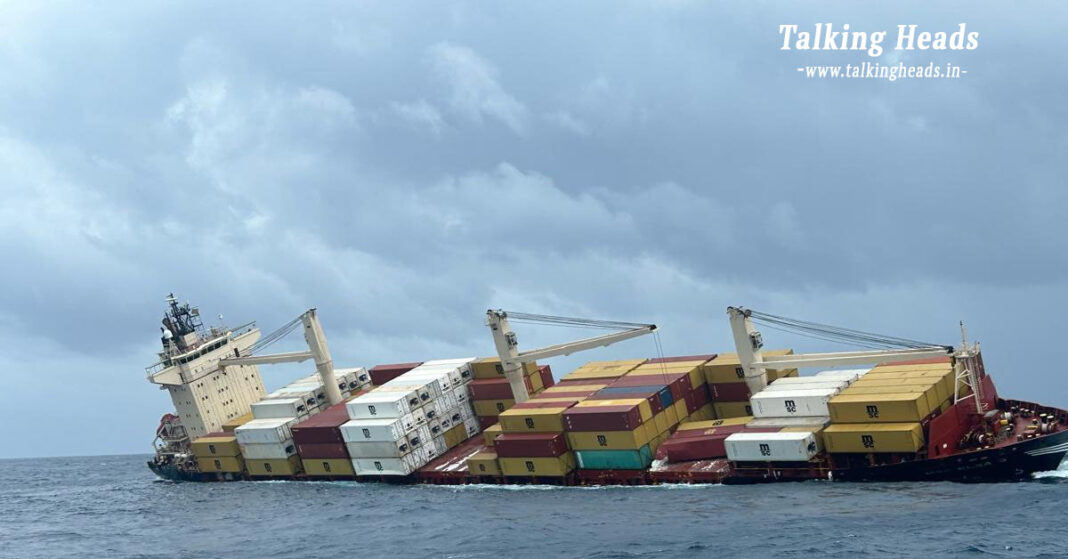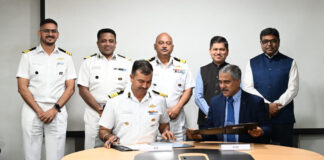A Dangerous Cargo — How One Chemical Can Ripen Fruit or Risk Explosions
Table of Contents
Cargo Ship : A small piece of calcium carbide is enough to ripen an entire room full of mangoes in just a couple of days. This industrial chemical, used widely in India for artificial fruit ripening, reacts dangerously with water to release acetylene gas—a highly flammable compound that can explode with even a tiny spark.
Now imagine 12 entire containers filled with calcium carbide lying underwater. That’s exactly what’s happened off the coast of Kerala, where the Liberia-flagged cargo ship MSC ELSA 3 sank on May 25, carrying 640 containers of various chemicals and fuels. Some of these containers have already begun drifting toward the coast, prompting serious concern among environmental and disaster management authorities.
Cargo Ship : Reason of sinking?
The 28-year-old vessel, en route from Kerala’s Vizhinjam Port to Kochi Port, met its fate just two days after departure. The Indian Coast Guard (ICG) reported that on May 25, water began flooding the ship’s cargo hold rapidly, causing it to capsize and sink.

The ship had a 24-member crew, including a Russian captain, and crew members from Ukraine, Georgia, and the Philippines. According to Kerala’s Port Minister V. N. Vasavan, the cause of the tilt remains under investigation, but strong winds, high waves, or loading errors are suspected contributors.
What Was Inside the 640 Containers? Government Confirms Hazardous Contents
India’s Defence Ministry confirmed in a social media post that the ship carried:
- 13 containers with hazardous chemicals
- 12 containers filled with calcium carbide
- 84.44 metric tons of marine gas oil (diesel)
- 367.1 metric tons of furnace oil

The Indian National Centre for Ocean Information Services (INCOIS) has activated emergency tracking systems and simulations to monitor oil leaks and drifting containers. Some containers have already started drifting toward Kerala’s coast at about 1 km/hour, prompting an alert across the region.
Kerala Declares Emergency Along Coastline — Here’s Why
Authorities warn that if calcium carbide mixes with seawater, it could create dangerous acetylene gas clouds capable of explosion.
Here’s how each hazardous substance poses a threat:
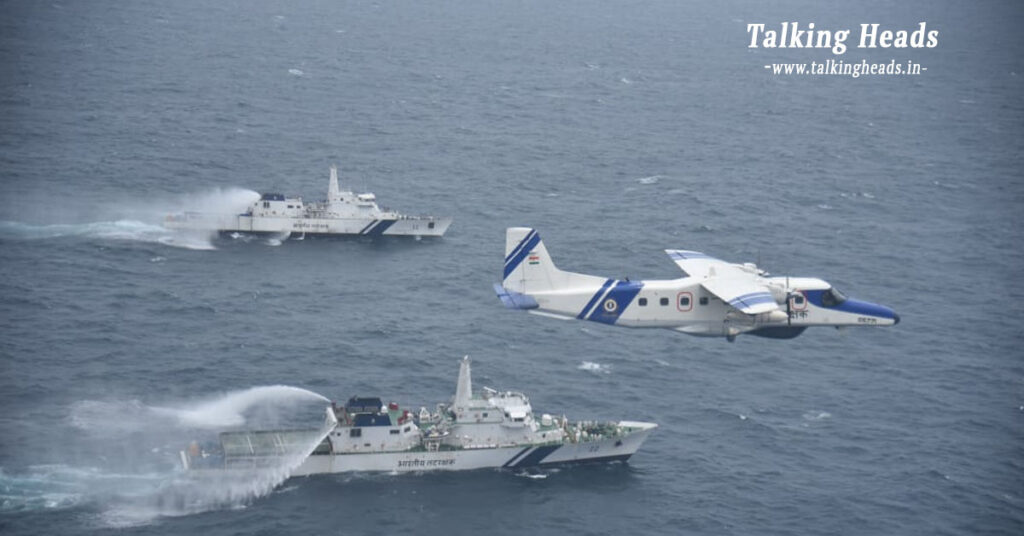
- Calcium Carbide
Reacts with water to release acetylene gas and calcium hydroxide. Acetylene gas is explosive at concentrations between 2.5% and 82% in air. - Marine Gas Oil (Diesel)
Forms a slick on the water’s surface, cutting off sunlight and oxygen supply, leading to oxygen depletion and long-term ecological damage. INCOIS forecasts the oil could reach Alappuzha, Kollam, Ernakulam, and Thiruvananthapuram within 36–48 hours. - Furnace Oil
A heavy, viscous fuel used in ship engines. It’s slower to spread but settles on the seabed, causing long-term pollution. It contains heavy metals like nickel, vanadium, and polycyclic aromatic hydrocarbons (PAHs)—all toxic to marine life and humans.
How Will the Oil and Chemical Spills Be Handled?
Several response strategies are being prepared in case of leaks:
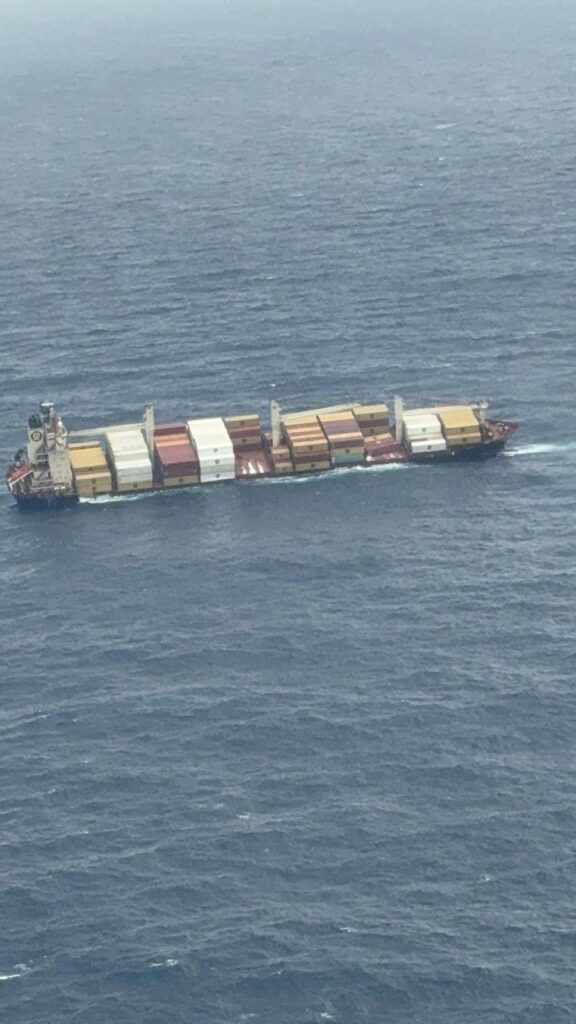
- Containment Booms: Floating barriers to prevent oil spread.
- Skimmers: Machines that collect oil from the water’s surface.
- Dispersants: Chemicals that break oil into smaller particles; controversial due to ecological impact.
- In-situ Burning: Controlled fires on water to eliminate oil; effective but polluting.
- Absorbent Materials: Natural or synthetic materials like straw and volcanic ash to soak up oil.
- Oil-eating Bacteria: Bio-remediation using microbes like Paraperlucidibaca and Cycloclasticus to break down hydrocarbons.
What Happens If the Spill Reaches Shore or Affects Marine Life?
If chemicals or oil reach Kerala’s shores, the consequences could be devastating:
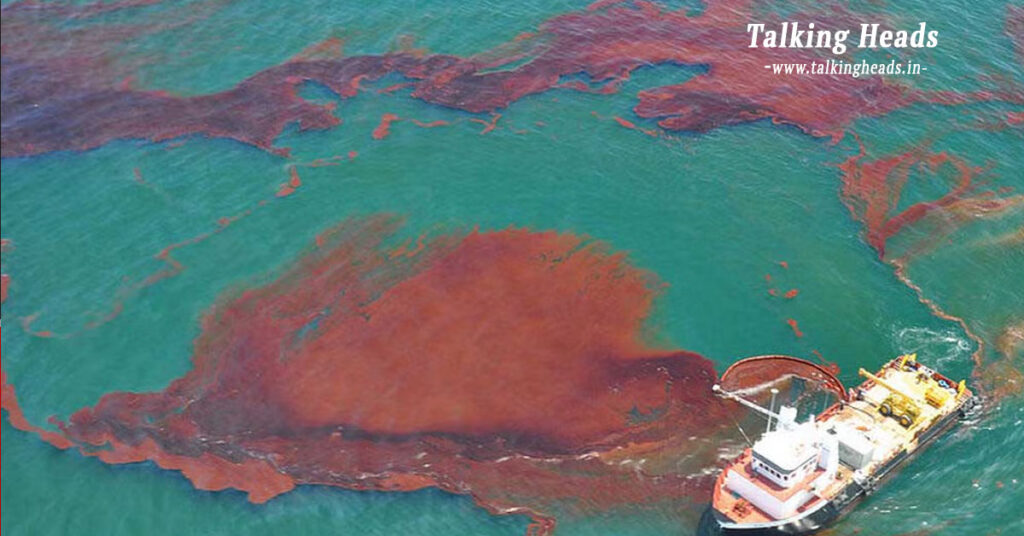
- Mass Marine Mortality
Toxic exposure could harm or kill dolphins, turtles, whales, octopuses, and countless fish. - Ecological Collapse
Oil on the surface blocks sunlight from reaching underwater plants and coral reefs, disrupting photosynthesis and marine biodiversity. - Human Health and Economic Impact
Tourism, boating, and fishing industries may face massive losses. Contaminated seafood can cause respiratory or gastrointestinal issues. Skin exposure to tainted water could lead to rashes or infections. Cleanup efforts could cost millions of dollars.
Ongoing Monitoring and Public Warnings in Place
The Indian Coast Guard, Navy, coastal police, and disaster management teams are working round-the-clock with surveillance aircraft and ships. Citizens have been strictly advised not to touch any unidentified barrels, containers, or oily patches on the beach and to report immediately to local authorities.




